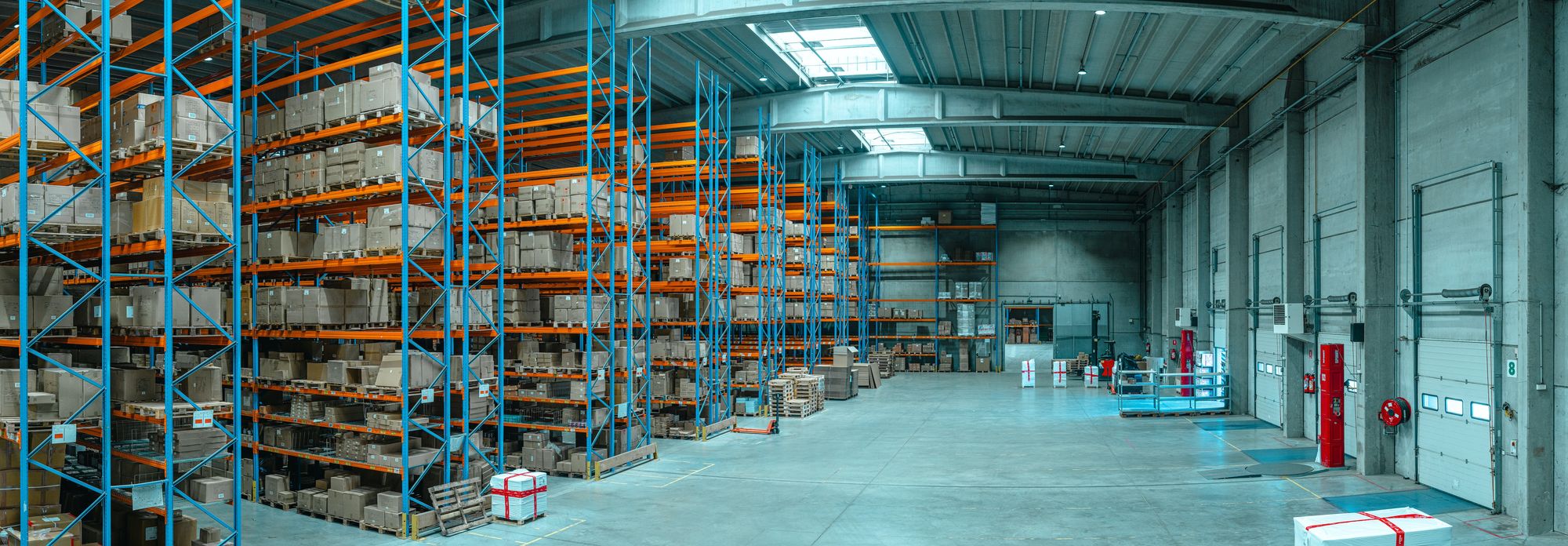The paper and pulp industry is facing significant challenges related to deforestation and the loss of biodiversity. According to a report by WWF, over 80% of the world's intact forest landscapes are at risk of being destroyed by human activities, and the paper industry is one of the major drivers of this destruction. (Source: World Wildlife Fund)
According to a report by the Environmental Paper Network, the paper industry is the fifth-largest consumer of energy worldwide and the third-largest industrial emitter of greenhouse gases. It is responsible for approximately 5% of global carbon emissions.

In 2021, the global paper and pulp industry was valued at approximately $400 billion, but it is expected to decline at a compound annual growth rate of 0.5% from 2021 to 2028 due to the increasing popularity of digital media and electronic devices. (Source: Grand View Research)
All of these statistics are a reflection of some of the main critical issues and challenges of the paper manufacturing industry. To be able to combat them, it is important to understand them completely.
This article will help you thereby covering the following topics:
- Paper Manufacturing: Critical Issues and Challenges
- Strategies for Combating Critical Issues and Challenges of Paper Manufacturing
- What are Some of the Most Promising Innovations that will Help Combat Critical Issues and Challenges of Paper Manufacturing?
- FAQs related to Critical Issues and Challenges of Paper Manufacturing
- How can Deskera Help You in Combating Critical Issues and Challenges of Paper Manufacturing?
- Key Takeaways
- Related Articles
Paper Manufacturing: Critical Issues and Challenges
Paper manufacturing is an industry that has been around for centuries and is an important part of our daily lives. However, like any industry, it faces critical issues and challenges that need to be addressed in order to ensure its sustainability and growth.
Here are some of the most pressing issues and challenges facing the paper manufacturing industry:
Environmental Impact
Environmental impact is one of the most critical issues and challenges facing the paper manufacturing industry. The process of manufacturing paper requires a significant amount of natural resources, including wood, water, and energy, as well as the use of chemicals and other materials that can have negative impacts on the environment.
One of the biggest environmental impacts of paper manufacturing is deforestation. The production of wood pulp, which is used to make paper, requires the harvesting of trees, which can have a significant impact on ecosystems and wildlife habitats. This can lead to soil erosion, loss of biodiversity, and other environmental problems.
In addition to deforestation, the paper manufacturing process can also lead to air and water pollution. Chemicals and other materials used in the process can contaminate water sources, leading to water quality issues, and can also contribute to air pollution through the release of greenhouse gases and other pollutants.
To address these environmental impacts, the paper manufacturing industry needs to invest in sustainable manufacturing practices and technologies that minimize the impact on the environment.
This includes using recycled materials, reducing waste and energy use, and implementing water conservation measures. In addition, the industry needs to work with governments and other stakeholders to develop policies and regulations that promote sustainable practices and protect the environment.
Overall, the environmental impact of paper manufacturing is a critical issue and challenge that needs to be addressed in order to ensure the sustainability of the industry and protect the environment for future generations.
Recycling
Recycling is another critical issue and challenges facing the paper manufacturing industry. While the paper is one of the most commonly recycled materials in the world, the process of recycling can be complicated and is not always efficient.
One of the challenges facing the paper manufacturing industry is contamination. If a paper is contaminated with other materials, such as food waste or plastic, it can make it difficult to recycle and can reduce the quality of the recycled product. This contamination can occur at any point in the recycling process, from collection to processing, and can result in additional costs for the industry.
Another challenge is the lack of education and awareness about recycling. Many consumers may not be aware of what can and cannot be recycled or may not have access to recycling programs in their communities. This can result in a lower rate of recycling, which can impact the availability of recycled materials for paper manufacturers.
To address these challenges, the paper manufacturing industry needs to invest in better recycling technologies and work with consumers, governments, and other stakeholders to improve recycling rates and reduce contamination.
This may involve investing in new equipment and processes to improve the quality of recycled materials, as well as working with communities to increase awareness and participation in recycling programs.
Overall, recycling is a critical issue and challenges facing the paper manufacturing industry. By improving recycling technologies and increasing awareness and participation in recycling programs, the industry can ensure a more sustainable future and reduce its impact on the environment.
Digitalization
Digitalization is another critical issue and challenges facing the paper manufacturing industry. The rise of digital technology has led to a decrease in demand for paper products as consumers and businesses increasingly rely on digital communication and storage.
As a result, paper manufacturers are facing increased competition from digital media, which can impact their profitability and sustainability. In order to remain competitive, the paper manufacturing industry needs to adapt to this new reality and find new ways to use paper products that are not as easily replaced by digital media.
One strategy is to focus on higher value-added paper products, such as specialty papers or packaging materials, that are not as easily replaced by digital media. Another strategy is to invest in digital technologies and processes that can improve efficiency and reduce costs while also leveraging the strengths of paper products in areas such as packaging and labeling.
In addition to these strategies, the paper manufacturing industry can also work to promote the sustainable use of paper products in a digital world. This can include initiatives to encourage responsible printing and paper use, as well as efforts to promote the recycling and reuse of paper products.
Overall, digitalization is a critical issue and challenges facing the paper manufacturing industry. By adapting to the changing market and finding new ways to use paper products, while also promoting sustainability and responsible use, the industry can remain competitive and contribute to a more sustainable future.
Globalization
Globalization is another critical issue and challenges facing the paper manufacturing industry. The industry is increasingly globalized, with paper products being produced and consumed around the world. This globalization has led to increased competition, as well as new opportunities for growth and expansion.
One of the challenges of globalization is the need to adapt to different market conditions and regulatory environments in different countries. This can require significant investment in research and development, as well as changes to production processes and supply chain management.
In addition, globalization can also lead to environmental and social concerns, as paper manufacturing may be carried out in countries with weaker environmental and labor regulations. This can result in negative impacts on local communities and ecosystems, as well as reputational risks for companies operating in these countries.
To address these challenges, the paper manufacturing industry needs to develop strategies that balance the benefits of globalization with the need to protect the environment and promote social responsibility. This may involve working with local communities and governments to develop sustainable manufacturing practices and ensure compliance with local regulations.
In addition, the industry may need to develop new business models that incorporate sustainable practices, such as using renewable materials or investing in green technologies. By doing so, the industry can not only remain competitive in a globalized marketplace but also contribute to a more sustainable future for all.
Cost
Cost is another critical issue and challenges facing the paper manufacturing industry. The industry is highly capital-intensive, with significant investment required in equipment, infrastructure, and raw materials. As a result, the cost of production can be a major factor in the profitability and sustainability of paper manufacturers.
One of the challenges facing the industry is the need to balance cost with other factors, such as quality, sustainability, and efficiency. For example, while using recycled materials can be more sustainable, it can also be more expensive than using virgin materials.
Similarly, investing in new technologies to improve efficiency can be costly in the short term but can lead to long-term cost savings and sustainability benefits.
In addition, the paper manufacturing industry also faces pressure from consumers and stakeholders to maintain competitive pricing while also addressing environmental and social concerns. This can require significant investment in sustainable practices and technologies, which can impact the cost of production.
To address these challenges, the paper manufacturing industry needs to focus on improving efficiency, reducing waste, and investing in sustainable practices and technologies that can improve profitability and reduce costs in the long term. This may involve partnerships with suppliers and other stakeholders to identify cost-saving opportunities, as well as a focus on continuous improvement and innovation.
Overall, the cost is a critical issue and challenges facing the paper manufacturing industry. By focusing on sustainable practices, efficiency, and innovation, the industry can remain competitive while also contributing to a more sustainable future.
Supply Chain Management
Supply chain management is another critical issue and challenges facing the paper manufacturing industry. The industry relies on complex supply chains that include raw materials suppliers, pulp and paper mills, converters, distributors, and retailers.
Effective supply chain management is essential to ensure a reliable supply of raw materials and finished products, as well as to meet customer demands and comply with environmental and social standards. It will also reduce the need to maintain safety stock.
One of the challenges facing the industry is ensuring the responsible sourcing of raw materials, particularly wood fibers. This requires the industry to work with suppliers and stakeholders to develop sustainable sourcing practices and ensure compliance with environmental and social standards.
In addition, supply chain management can be complicated by the global nature of the industry, with raw materials and finished products often crossing multiple borders.
Effective supply chain management also requires collaboration and communication between different stakeholders in the supply chain. This includes developing strong relationships with suppliers and customers, as well as implementing effective systems for tracking and monitoring supply chain performance.
To address these challenges, the paper manufacturing industry needs to invest in supply chain management systems and technologies that can improve transparency, efficiency, and sustainability.
This may involve implementing traceability systems to track the origin of raw materials, as well as developing partnerships with suppliers and other stakeholders to promote responsible sourcing and compliance with environmental and social standards.
Overall, supply chain management is a critical issue and challenges facing the paper manufacturing industry. By focusing on sustainable sourcing and effective supply chain management, the industry can ensure a reliable supply of raw materials and finished products while also promoting environmental and social responsibility.
Innovation
Innovation is another critical issue and challenges facing the paper manufacturing industry. The industry needs to continuously innovate to remain competitive, improve efficiency, reduce costs, and address the challenges facing the industry, such as environmental concerns and changing consumer preferences.
One area of innovation in the industry is the development of new and improved paper products. For example, paper manufacturers are developing new packaging materials that are more sustainable, such as biodegradable and compostable materials.
In addition, the industry is exploring new applications for paper products, such as building materials and bio-based chemicals.
Another area of innovation is the development of new technologies and processes to improve efficiency and reduce environmental impact. For example, paper mills are investing in new energy-efficient technologies, such as biomass boilers and cogeneration systems, which can reduce energy consumption and greenhouse gas emissions.
In addition, the industry is exploring new ways to reduce waste, such as by converting waste streams into energy or by using waste materials to produce new products.
Innovation also requires collaboration between different stakeholders, such as suppliers, customers, and research institutions. For example, paper manufacturers can work with suppliers to develop new and sustainable raw materials or collaborate with customers to develop customized products that meet specific needs.
To address these challenges, the paper manufacturing industry needs to invest in research and development and foster a culture of innovation. This may involve partnerships with research institutions and universities, as well as investment in new technologies and processes.
Overall, innovation is a critical issue and challenges facing the paper manufacturing industry. By focusing on innovation and collaboration, the industry can remain competitive, improve efficiency, reduce costs, and address the challenges facing the industry.
Changing Consumer Preferences
Changing consumer preferences is another critical issue and challenges facing the paper manufacturing industry. Consumers are increasingly demanding products that are more sustainable, environmentally friendly, and socially responsible. As a result, the paper manufacturing industry needs to adapt to these changing preferences to remain competitive and relevant.
One area of changing consumer preferences is the demand for sustainable and environmentally friendly products. Consumers are increasingly concerned about the environmental impact of the products they use, including paper products. This has led to a growing demand for products made from recycled fibers or from sustainably sourced raw materials.
To address these changing buyer persona and consumer preferences, paper manufacturers need to invest in sustainable sourcing and production practices. This may involve working with suppliers to develop responsible sourcing practices or implementing new technologies and processes that reduce waste and energy consumption.
Another area of changing consumer preferences is the demand for digitalization and paperless solutions. With the increasing use of digital technologies, such as e-books and online documents, the demand for paper products has decreased in certain areas, such as printing and publishing.
As a result, paper manufacturers need to find new applications for paper products, such as packaging materials or building materials, or develop new products that meet the changing needs of consumers.
To address these changing consumer preferences, paper manufacturers need to be flexible and adaptable. This may involve diversifying their product lines, investing in new technologies and processes, or partnering with other industries to find new applications for paper products.
Overall, changing consumer preferences is a critical issue and challenges facing the paper manufacturing industry. By adapting to these changing preferences, the industry can remain competitive, meet the needs of consumers, and promote environmental and social responsibility.
Strategies for Combating Critical Issues and Challenges of Paper Manufacturing
There are several strategies that paper manufacturing companies can adopt to combat the critical issues and challenges they face. Here are some strategies:
Combating Environmental Impact
There are several strategies that can be used to combat the environmental impact of paper manufacturing. Here are a few examples:
- Increase the use of recycled materials: One of the biggest environmental impacts of paper manufacturing is the depletion of natural resources. Using recycled paper can help reduce the need for virgin materials and can also reduce the amount of waste sent to landfills.
- Use sustainable sourcing methods: Companies can use sustainably sourced wood fibers, such as those certified by the Forest Stewardship Council (FSC), to minimize their impact on forests and the environment.
- Reduce energy usage: Paper manufacturing is an energy-intensive process, so companies can reduce their environmental impact by improving energy efficiency. This can include investing in renewable energy sources, optimizing manufacturing processes, and reducing energy consumption through conservation measures. This will also help in saving on manufacturing costs and operating costs, thereby improving operational metrics.
- Implement waste reduction strategies: Paper manufacturing generates a significant amount of waste, including wastewater, sludge, and solid waste. Companies can implement waste reduction strategies, such as reusing or recycling waste materials, to minimize their environmental impact.
- Use eco-friendly production methods: Companies can use eco-friendly production methods, such as using less harmful chemicals, reducing greenhouse gas emissions, and improving water management practices.
- Promote environmental awareness: Companies can raise awareness about the environmental impact of paper manufacturing among their employees, customers, and stakeholders. This can be done through education and outreach programs, as well as through the development of sustainability reports.
By implementing these strategies, companies can reduce their environmental impact and help create a more sustainable future for the paper manufacturing industry.
Combating Recycling Issues
The recycling of paper is a critical issue in paper manufacturing, and there are several strategies that can be used to combat this issue. Here are a few examples:
- Increase recycling rates: One of the most effective strategies for combating the critical issue of paper recycling is to increase recycling rates. This can be done through education and outreach programs, as well as through the development of incentives for consumers and businesses to recycle.
- Improve recycling infrastructure: In many areas, the recycling infrastructure is inadequate or outdated. Companies can work with local governments and other stakeholders to improve recycling infrastructure, including collection, sorting, and processing facilities.
- Develop new recycling technologies: There are currently many challenges associated with recycling paper, including contamination and the presence of non-recyclable materials. Companies can invest in research and development to develop new recycling technologies that can overcome these challenges.
- Use recycled materials: Companies can reduce the need for virgin materials by using recycled paper in their manufacturing processes. This can help create a market for recycled materials, which can, in turn, help increase recycling rates.
- Partner with other stakeholders: To effectively combat the critical issue of paper recycling, it is important for companies to partner with other stakeholders, including governments, non-profits, and other businesses. These partnerships can help create a more coordinated and effective approach to recycling.
By implementing these strategies, companies can help address the critical issue of paper recycling and create a more sustainable future for the paper manufacturing industry.
Combating Digitalization Issues
The digitalization of paper manufacturing is a critical issue that presents both challenges and opportunities for the industry. Here are some strategies that companies can use to combat this issue:
- Invest in digital technologies: To remain competitive in a digital world, companies should invest in digital technologies that can help optimize manufacturing processes, reduce waste, and improve efficiency. This can include the use of automation, robotics, and artificial intelligence.
- Develop new products and services: Companies can develop new products and services that incorporate digital technologies, such as digital printing and online ordering systems. This can help meet the changing needs of customers and create new revenue streams. It can also lead to improved customer retention and increased sales velocity.
- Improve supply chain management: The digitalization of paper manufacturing can create new opportunities for supply chain optimization, including real-time tracking of raw materials and finished products and automated inventory management.
- Embrace sustainability: Companies can use digital technologies to improve sustainability, such as by reducing paper usage through digital communication and documentation. This can help reduce the environmental impact of paper manufacturing and meet the changing expectations of consumers, which will also lead to increased customer loyalty.
- Work with industry partners: To effectively combat the critical issue of digitalization, companies should work with industry partners, including suppliers, customers, and other businesses. This can help create a more collaborative and coordinated approach to the digital transformation of the industry.
By implementing these strategies, companies can address the critical issue of digitalization and position themselves for success in a rapidly changing business landscape.
Combating Globalization Issues
The globalization of paper manufacturing is a critical issue that presents both challenges and opportunities for the industry. Here are some strategies that companies can use to combat this issue:
- Embrace sustainability: Companies can differentiate themselves in a global market by embracing sustainability and implementing environmentally friendly practices. This can help meet the changing expectations of consumers and stakeholders and create a competitive advantage.
- Focus on quality: In a global market, companies must focus on quality to remain competitive. This can include improving product consistency, reliability, and durability, as well as meeting regulatory and industry standards.
- Diversify product offerings: Companies can diversify their product offerings to meet the needs of different global markets. This can include offering customized products and services, as well as developing new products that address emerging trends and demands. This will lead to an improvement in your business metrics, as well as in your financial statements and financial KPIs.
- Build strong partnerships: To effectively compete in a global market, companies should build strong partnerships with suppliers, customers, and other businesses. This can help create a more collaborative and coordinated approach to manufacturing, as well as provide access to new markets and customers.
- Leverage digital technologies: Digital technologies can help companies streamline operations, optimize manufacturing processes, and improve supply chain management. This can help reduce costs, increase efficiency, and improve competitiveness in a global market. This will collectively lead to higher returns on investment.
By implementing these strategies, companies can address the critical issue of globalization and position themselves for success in a rapidly changing business landscape.
Combating Cost Issues
The cost of paper manufacturing is a critical issue that can affect the profitability and sustainability of the industry. Here are some strategies that companies can use to combat this issue:
- Optimize manufacturing processes: Companies can optimize their manufacturing processes to reduce costs and improve efficiency. This can include implementing lean manufacturing practices, reducing waste, and improving equipment maintenance.
- Invest in new technologies: Investing in new technologies can help companies reduce costs, improve productivity, and create new revenue streams. This can include the use of automation, artificial intelligence, and digital technologies.
- Implement sustainable practices: Sustainable practices can help companies reduce costs, improve efficiency, and meet the changing expectations of consumers and stakeholders. This can include reducing energy consumption, using recycled materials, and implementing waste reduction programs.
- Focus on product innovation: Companies can differentiate themselves in a competitive market by focusing on product innovation. This can include developing new products that meet emerging trends and demands, as well as improving the quality and performance of existing products.
- Build strong partnerships: Building strong partnerships with suppliers, customers, and other businesses can help companies reduce costs and improve efficiency. This can include collaborating on product development, sharing resources, and implementing joint procurement programs.
By implementing these strategies, companies can address the critical issue of cost and position themselves for success in a competitive and challenging business landscape.
Combating Supply Chain Management Issues
The supply chain management of paper manufacturing is a critical issue that can affect the efficiency, quality, and sustainability of the industry. Here are some strategies that companies can use to combat this issue:
- Implement technology solutions: Companies can implement technology solutions, such as Enterprise Resource Planning (ERP) software or Material Requirements Planning (MRP) software, to provide end-to-end visibility and control of the supply chain. This can help optimize inventory levels, reduce lead times, and improve supplier performance.
- Establish supplier partnerships: Companies can establish strong partnerships with suppliers to create a more collaborative and efficient supply chain. This can include working closely with suppliers to improve delivery times, quality control, and reduce costs.
- Implement sustainable practices: Sustainable practices can help companies reduce costs and improve supply chain efficiency. This can include using recycled materials, implementing environmentally friendly manufacturing processes, and reducing waste.
- Create supply chain risk management strategies: Companies can create supply chain risk management strategies to address potential disruptions such as natural disasters, political instability, or supplier bankruptcies. This can include developing contingency plans, diversifying suppliers, and implementing real-time monitoring of the supply chain.
- Focus on continuous improvement: Companies can continuously improve their supply chain management by conducting regular assessments, gathering feedback, and implementing best practices. This can help identify areas for improvement, optimize processes, and improve customer satisfaction.
By implementing these strategies, companies can address the critical issue of supply chain management and position themselves for success in a rapidly changing business landscape.
Combating Innovation Issues
The innovation of paper manufacturing is a critical issue that can affect the competitiveness and sustainability of the industry. Here are some strategies that companies can use to combat this issue:
- Foster a culture of innovation: Companies can foster a culture of innovation by encouraging creativity, experimentation, and risk-taking. This can include providing employees with the necessary resources and support to pursue innovative ideas.
- Invest in research and development: Investing in research and development can help companies develop new products, technologies, and processes. This can include partnering with academic institutions or research organizations to gain access to the latest advances in the industry.
- Collaborate with suppliers and customers: Collaborating with suppliers and customers can help companies gain new insights and develop innovative solutions. This can include co-creating new products or services, sharing knowledge and expertise, and building long-term relationships.
- Embrace digital technologies: Digital technologies can help companies streamline operations, optimize manufacturing processes, and create new revenue streams. This can include the use of automation, artificial intelligence, and big data analytics.
- Monitor emerging trends: Companies can monitor emerging trends in the industry to stay ahead of the competition and identify new opportunities. This can include attending trade shows, participating in industry associations, and gathering feedback from customers and stakeholders.
By implementing these strategies, companies can address the critical issue of innovation and position themselves for success in a rapidly changing business landscape.
Combating the Issue of Changing Consumer Preferences
Changing consumer preferences in paper manufacturing can pose a critical issue that can affect the competitiveness and sustainability of the industry. Here are some strategies that companies can use to combat this issue:
- Understand consumer preferences: Companies can understand consumer preferences by conducting market research and gathering feedback from customers. This can help identify emerging trends, preferences, and demand patterns.
- Develop new products: Companies can develop new products that meet changing consumer preferences. This can include products that are environmentally friendly, sustainable, or offer improved performance.
- Improve product quality: Companies can improve product quality by investing in new technologies, materials, and manufacturing processes. This can help create products that meet consumer expectations and provide a competitive advantage.
- Enhance customer experience: Companies can enhance customer experience by providing excellent customer service, offering personalized products, and creating unique brand experiences. This can help build customer loyalty, increase customer satisfaction, and therefore encourage returning customers.
- Implement sustainable practices: Companies can implement sustainable practices to meet changing consumer preferences for environmentally friendly products. This can include using recycled materials, reducing waste, and implementing environmentally friendly manufacturing processes.
- Adapt marketing strategies: Companies can adapt their marketing strategies to appeal to changing consumer preferences. This can include using social media, influencer marketing, and targeted advertising campaigns.
By implementing these strategies, companies can address the critical issue of changing consumer preferences and position themselves for success in a competitive and rapidly changing business landscape.
What are Some of the Most Promising Innovations that will Help Combat Critical Issues and Challenges of Paper Manufacturing?
There are several promising innovations that can help combat the critical issues and challenges of paper manufacturing. Here are some of them:
- Nanocellulose: Nanocellulose is a material that is derived from wood fibers and has unique properties that make it suitable for a variety of applications. It can be used to create lightweight, strong, and environmentally friendly products such as paper, packaging materials, and textiles.
- 3D printing: 3D printing technology can be used to create customized molds for paper pulp products such as egg cartons and packaging materials. This can reduce waste and increase production efficiency.
- Biodegradable polymers: Biodegradable polymers are an alternative to traditional plastic packaging materials. They are made from renewable materials such as corn starch and are biodegradable, compostable, and environmentally friendly.
- Green chemistry: Green chemistry is a set of principles that aim to reduce the environmental impact of chemical processes. This can include using renewable raw materials, minimizing waste, and reducing energy consumption.
- Artificial intelligence: Artificial intelligence can be used to optimize paper manufacturing processes by analyzing data, predicting equipment failures, and optimizing production schedules.
- Blockchain technology: Blockchain technology can be used to increase supply chain transparency and traceability. This can help ensure that raw materials are sourced sustainably, and that manufacturing processes are environmentally friendly.
By leveraging these and other promising innovations, the paper manufacturing industry can address critical issues and challenges such as environmental impact, recycling, innovation, and supply chain management and position itself for success in a rapidly changing business landscape.
FAQs related to Critical Issues and Challenges of Paper Manufacturing
- What is the environmental impact of paper manufacturing?
Paper manufacturing can have a significant environmental impact due to the use of wood pulp, energy, and water resources. It can also generate waste and emissions.
- How can the environmental impact of paper manufacturing be reduced?
The environmental impact of paper manufacturing can be reduced by using sustainable and recycled materials, improving manufacturing processes, reducing waste and emissions, and implementing sustainable practices.
- What are the challenges of paper recycling?
The challenges of paper recycling include the contamination of recycled paper, the lack of recycling infrastructure in some areas, and the high cost of recycling.
- How can paper recycling be improved?
Paper recycling can be improved by reducing the contamination of recycled paper, investing in recycling infrastructure, and educating consumers on the importance of recycling.
- How is digitalization affecting paper manufacturing?
Digitalization is affecting paper manufacturing by reducing the demand for paper products and increasing competition from digital media.
- How can paper manufacturers adapt to the digitalization of the industry?
Paper manufacturers can adapt to the digitalization of the industry by diversifying their product offerings, improving production efficiency, and investing in digital technologies.
- What are the benefits of globalization in paper manufacturing?
Globalization in paper manufacturing can lead to increased market opportunities, access to new materials and technologies, and increased efficiency in production and distribution.
- What are the challenges of globalization in paper manufacturing?
The challenges of globalization in paper manufacturing include increased competition, trade barriers, and environmental and social concerns.
- How can paper manufacturers manage their supply chains?
Paper manufacturers can manage their supply chains by working with suppliers to ensure the sustainable sourcing of raw materials, implementing quality control measures, and using technology to improve efficiency and transparency.
- What role does innovation play in paper manufacturing?
Innovation plays a crucial role in paper manufacturing by improving product quality, increasing efficiency, and addressing critical issues such as environmental impact and changing consumer preferences.
- What are the emerging trends in paper manufacturing?
Emerging trends in paper manufacturing include the use of sustainable and biodegradable materials, digitalization, and the adoption of new manufacturing technologies.
- How can paper manufacturers improve their product quality?
Paper manufacturers can improve their product quality by investing in new technologies, materials, and manufacturing processes and implementing quality control measures.
- How can paper manufacturers reduce their costs?
Paper manufacturers can reduce their costs by improving production efficiency, reducing waste, and implementing cost-saving measures such as energy-efficient technology.
- What is the role of sustainability in paper manufacturing?
Sustainability plays a critical role in paper manufacturing by addressing environmental concerns, promoting the responsible use of natural resources, and ensuring the long-term viability of the industry.
- How can paper manufacturers ensure the sustainable production of paper products?
Paper manufacturers can ensure the sustainable production of paper products by using sustainable and recycled materials, implementing sustainable practices, and ensuring the responsible sourcing of raw materials.
How can Deskera Help You in Combating Critical Issues and Challenges of Paper Manufacturing?
Deskera MRP is a comprehensive business management software that can help paper manufacturing companies combat critical issues and challenges in the following ways:
- Environmental impact: Deskera can help paper manufacturing companies monitor their environmental impact by tracking energy consumption, waste generation, and emissions. This information can be used to implement sustainable practices and reduce the company's environmental footprint.
- Recycling: Deskera can help paper manufacturing companies manage their recycling programs by tracking recycling rates, identifying areas for improvement, and monitoring the quality of the recycled paper.
- Digitalization: Deskera can help paper manufacturing companies adapt to the digitalization of the industry by offering a range of digital solutions such as e-commerce, digital marketing, and online collaboration tools.
- Globalization: Deskera can help paper manufacturing companies manage their supply chain and logistics by offering tools for procurement, inventory management, and shipping.
- Cost management: Deskera can help paper manufacturing companies reduce costs by providing tools for budgeting, forecasting, and expense management.
- Innovation: Deskera can help paper manufacturing companies drive innovation by offering tools for product development, project management, and collaboration.
- Changing consumer preferences: Deskera can help paper manufacturing companies stay up-to-date with changing consumer preferences by offering tools for market research, customer segmentation, and digital marketing.
Key Takeaways
Based on our previous discussions, here are eight critical issues and challenges facing the paper manufacturing industry:
- Environmental impact: The paper manufacturing industry faces significant environmental challenges, including deforestation, water pollution, and greenhouse gas emissions. Addressing these challenges requires investment in sustainable practices and technologies, as well as a focus on reducing waste and promoting responsible resource management.
- Recycling: Recycling is another critical issue and challenges facing the paper manufacturing industry. To improve recycling rates and reduce contamination, the industry needs to invest in better recycling technologies and work with consumers and communities to increase awareness and participation in recycling programs.
- Digitalization: The rise of digital technology has led to a decrease in demand for paper products, which can impact the profitability and sustainability of paper manufacturers. To remain competitive, the industry needs to adapt to this new reality and find new ways to use paper products that are not as easily replaced by digital media.
- Globalization: The industry is increasingly globalized, which presents challenges in terms of adapting to different market conditions and regulatory environments, as well as ensuring compliance with environmental and social standards.
- Cost: The paper manufacturing industry is highly capital-intensive, and the cost of production can be a major factor in the profitability and sustainability of paper manufacturers. The industry needs to focus on improving efficiency, reducing waste, and investing in sustainable practices and technologies that can improve profitability and reduce costs in the long term.
- Supply chain management: The paper manufacturing industry relies on complex supply chains that can be challenging to manage, particularly in terms of ensuring responsible sourcing and compliance with environmental and social standards.
- Innovation: The industry needs to invest in continuous innovation to remain competitive and address the challenges facing the industry. This may involve developing new products and technologies that can improve sustainability and efficiency, as well as collaborating with stakeholders to identify new opportunities and solutions.
- Changing consumer preferences: The industry also faces challenges in terms of changing consumer preferences, particularly in terms of sustainability and environmental concerns. The industry needs to adapt to these changing preferences and develop products and practices that meet the needs and expectations of consumers.
In conclusion, the paper manufacturing industry faces a range of critical issues and challenges, but there are strategies and solutions available to combat these issues. Overall, Deskera MRP can help paper manufacturing companies improve their efficiency, reduce costs, and stay competitive in a rapidly changing industry.
Related Articles












